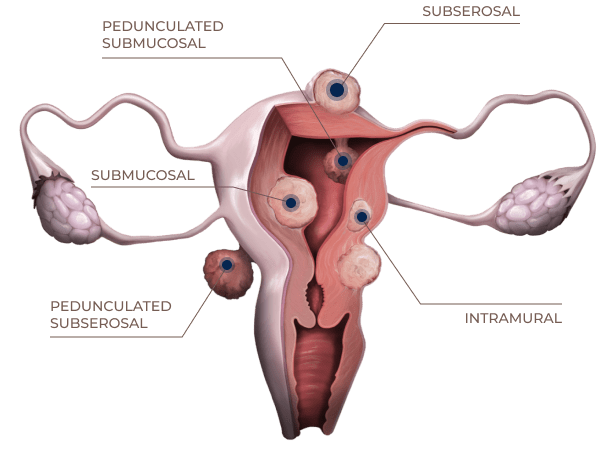Fibroids are classified by their locations
Fibroids range in size from small, pea-sized growths to large, grapefruit-sized tumors. They can also grow on the inside or outside of the uterus where their locations and sizes can determine your symptoms and treatments. Doctors have given different names to the fibroids according to their locations and how they are attached.




















